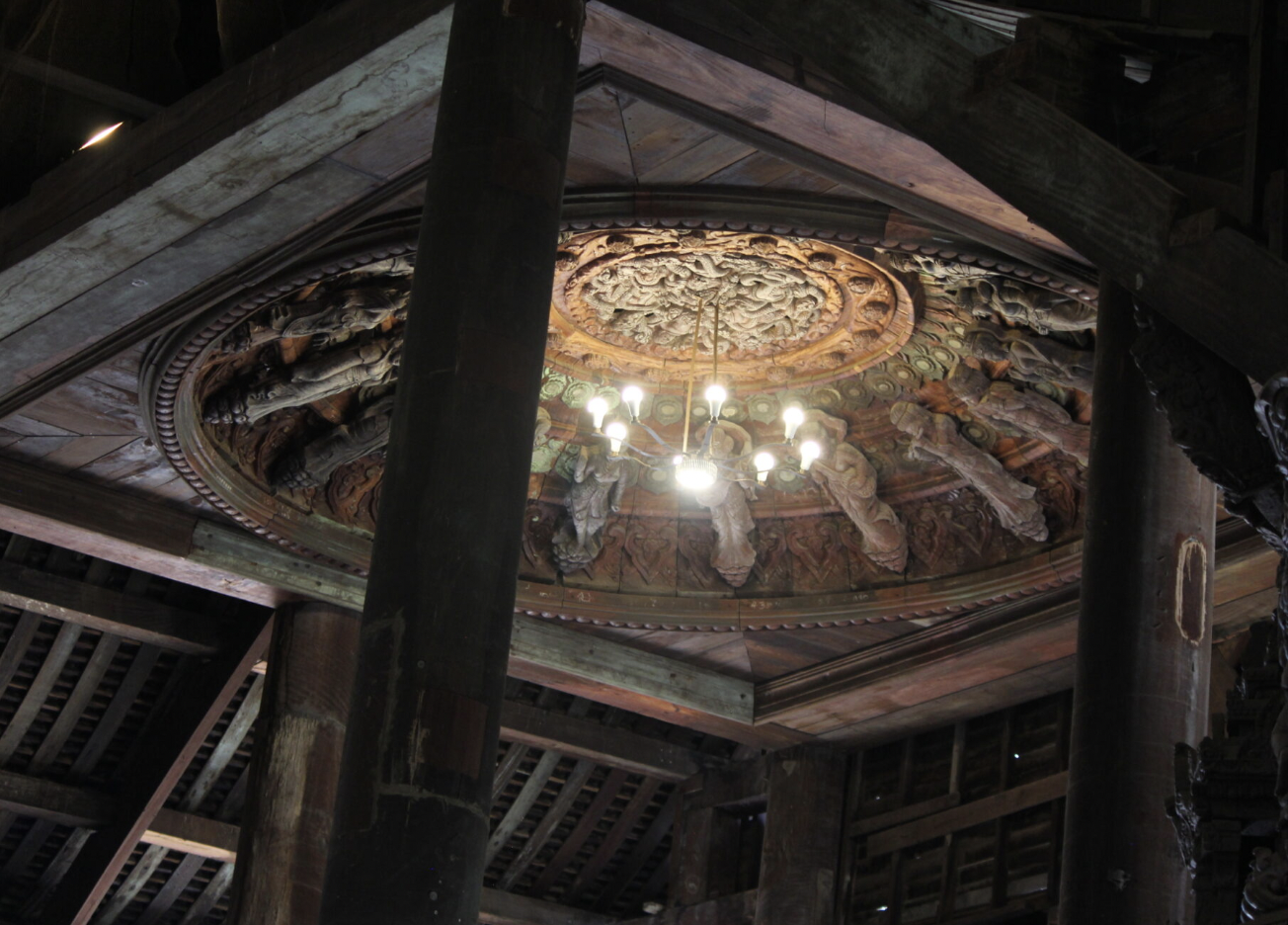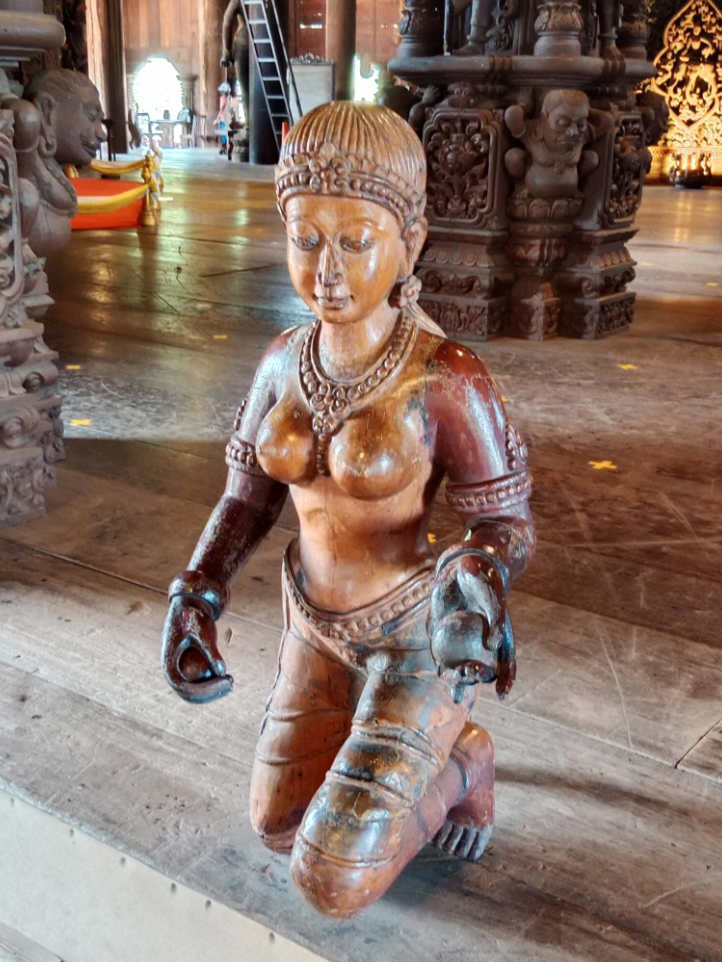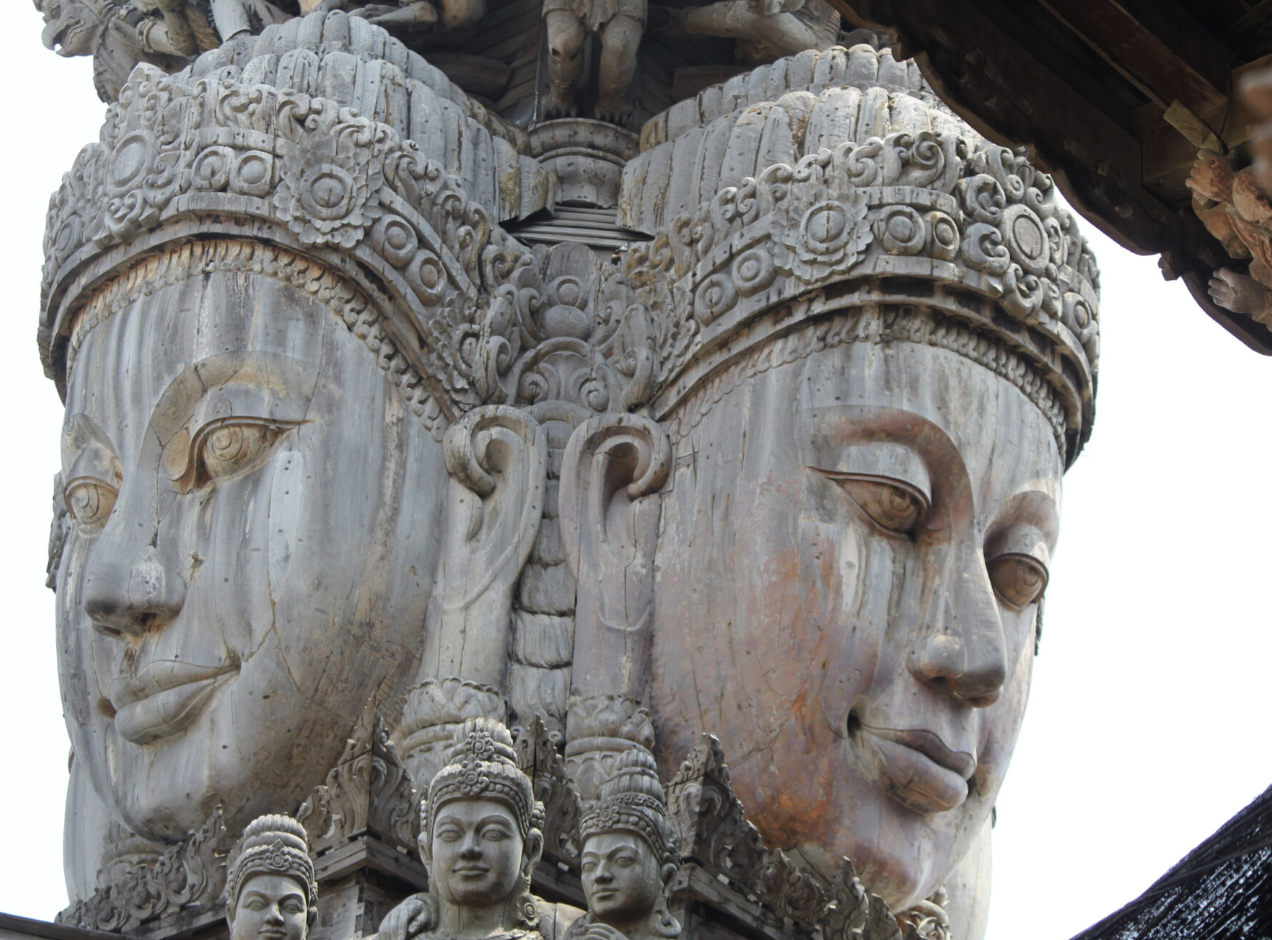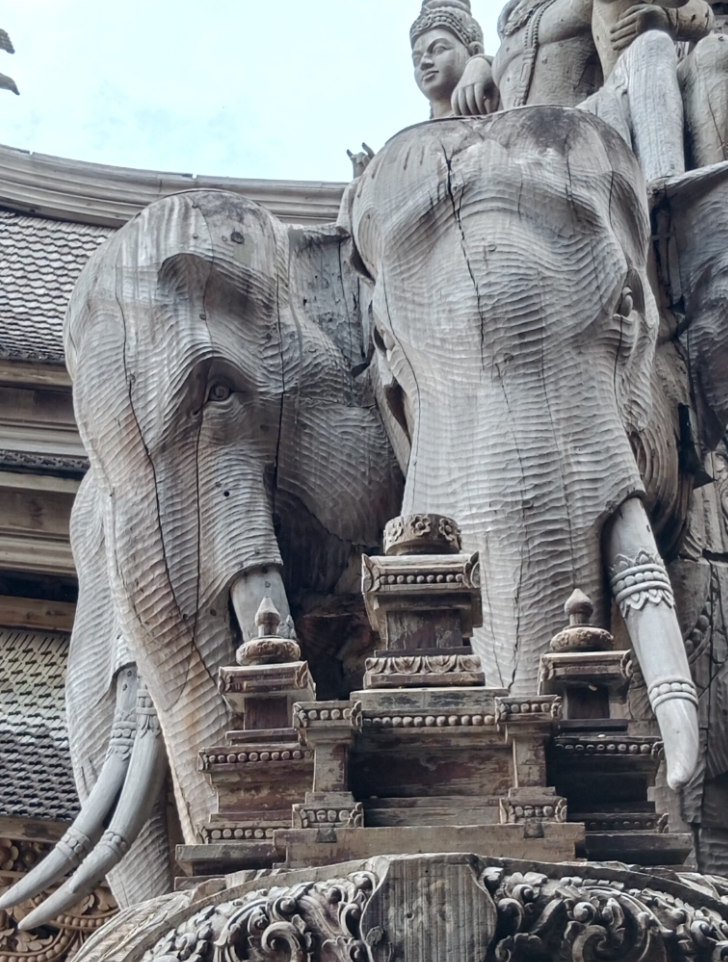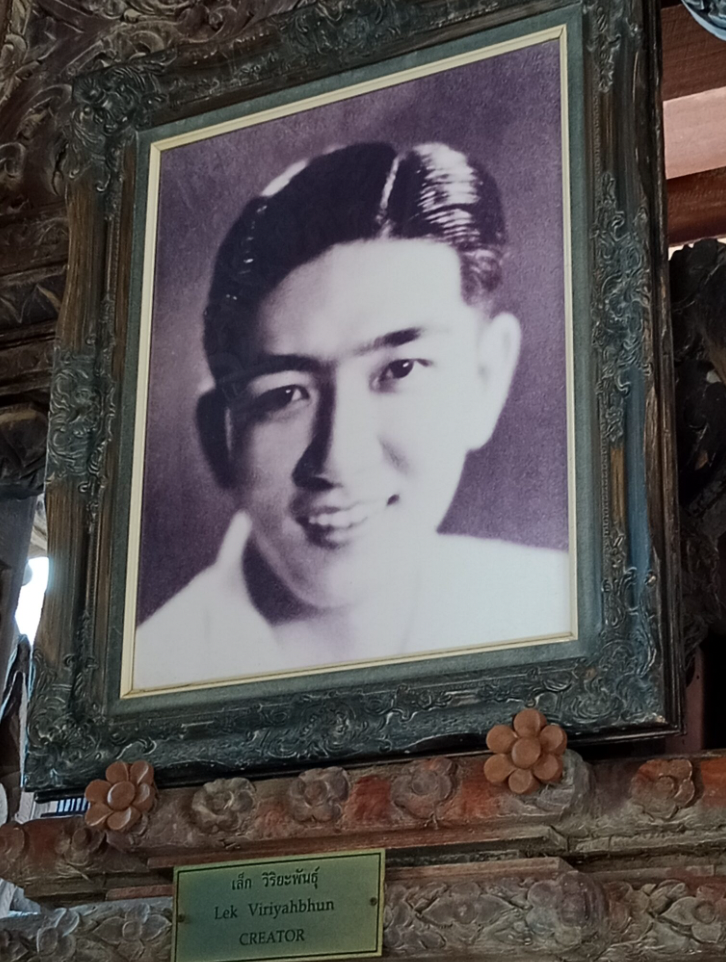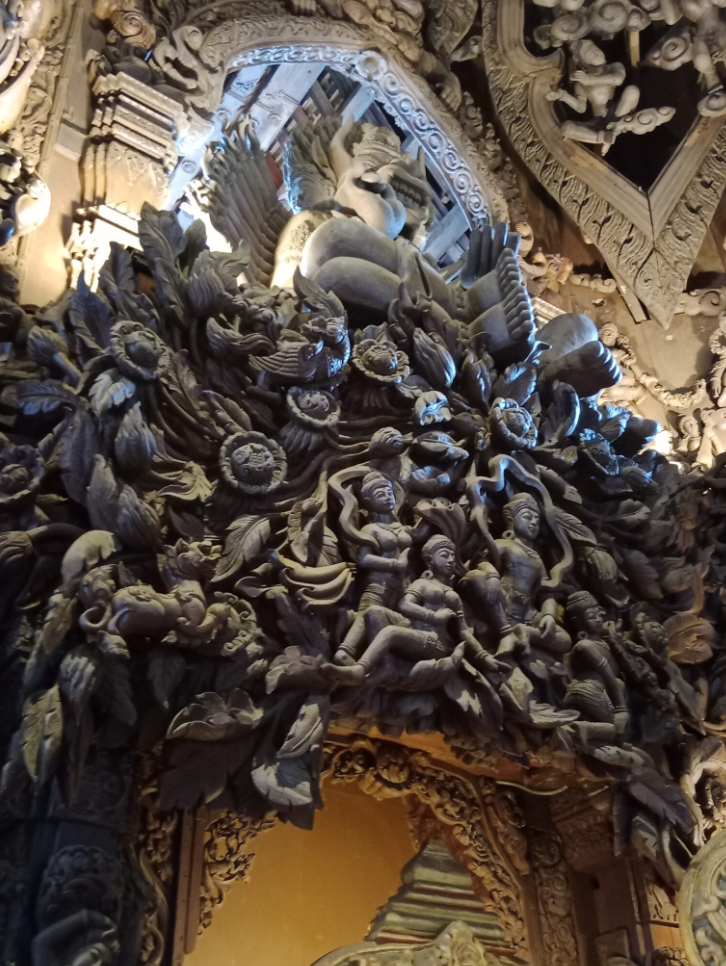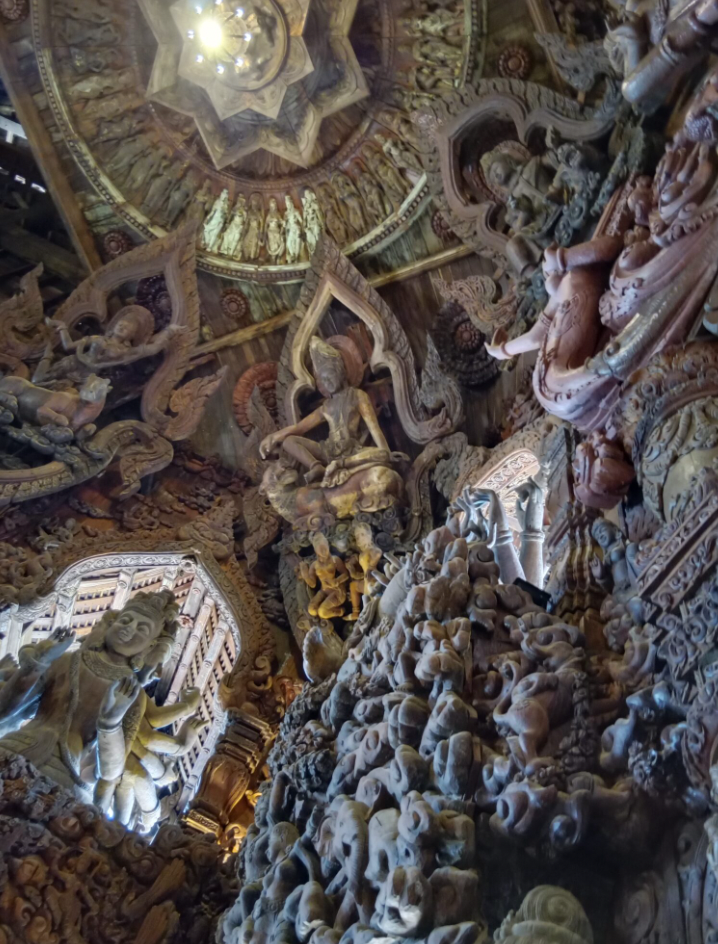The Sanctuary of Truth
By Michael Jaffrey
Pattaya Beach in Thailand is a steaming, heaving centre of tourism, where young travellers scuba-dive off tropical islands, and middle-aged men buy cheap love at an advantageous exchange rate. The Sanctuary of Truth stands on the other side of the point at the north end of the beach. It is only a couple of kilometres away, but in terms of its spiritual orientation, it is another universe.
The Sanctuary of Truth is a Large wooden building in the Ayutthaya style located on the edge of the Gulf of Thailand. Built in the shape of a cross, each axis is 50 metres long, with a centre spire that stands 30 metres tall and an internal floor space of 2115 square metres. As one descends the stairway through the forest, the first impression one gets is of the building’s size. It looks like an enormous wooden boat planted on the ground. The second impression is of the cacophony of carved figures which cover every square meter of the structure.
This is even more impressive when the tour guide tells you that not a single nail was used in its construction.
The Sanctuary of Truth is the brainchild of millionaire Thai businessman Lek Viriyaphan who wanted to preserve in allegorical form the teachings of Buddhism and Hinduism for future generations. Work was started in the early 1980s, and while the building is now mostly finished, crafts men and women still labour to complete carvings for the few remaining bare patches. Lek Viriyaphan worked for many years on the building with his own hands.
The inside of the building is as impressive as the outside. Four galleries radiate from a central, cathedral like space where a circular carved ceiling hangs, supported by four wooden pillars high overhead. Each gallery expresses an idea in carved allegorical form taken from Buddhist, Hindu, or other religious wisdom. From the teaching of Confucius: respect for elders; from Hinduism: the deities representing the elements of Fire, Water, Air, and Earth; from Buddhism: the performance of good Dharma. There is also a concession to modernity with the need to look after the environment, as well as a statue of His Majesty King Bhumibol Rama the 9th whose epithet “The Great” was given for his role in caring for the rural poor with many land development programs.
The Sanctuary of Truth reflects a divine, moral universe, filled to capacity with Gods and Goddesses. This is consistent with Hindu and Buddhist cosmology which sees the cosmos as a stage for a reincarnation game of snakes and ladders carried out over many lifetimes.
One can visit many ruins in Thailand that are hundreds of years old and still echo with grandeur and beauty. But what is extraordinary about the Sanctuary of Truth is that it is a livingwork of art which radiates stillness and solemnity today. The quietness of this place is like a Catholic cathedral – but different. It is an odd mix of the prosaic and the sublime. Crafts men and women work away with power tools in a covered shed filled with the pungent smell of tropical timbers, not far from the Sanctuary. There, living Deities stand in silent dignity, invited by likenesses of themselves. Walking around inside the Sanctuary of Truth is like standing on the deck of a ship that takes you to new inner landscapes.
Or, if that’s all a bit too esoteric, you can just be blown away by the craftsmanship and finish your tour with an iced mango smoothy. Either way, for 25 Australian dollars it’s a bargain!


